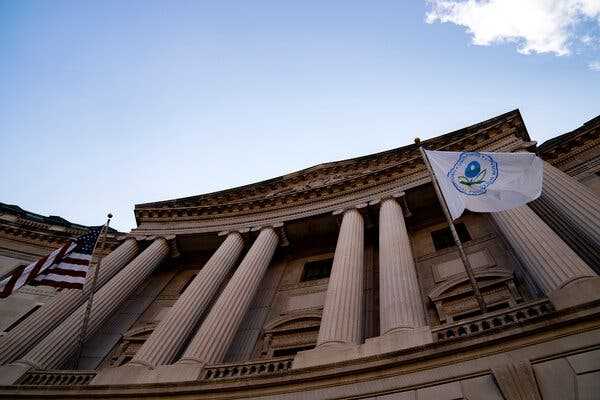The decision is expected to prompt a rush of litigation challenging regulations across the entire federal government, from food safety to the environment.
- Share full article

The Environmental Protection Agency building in Washington.
The Supreme Court’s decision on Friday to limit the broad regulatory authority of federal agencies could lead to the elimination or weakening of thousands of rules on the environment, health care, worker protection, food and drug safety, telecommunications, the financial sector and more.
The decision is a major victory in a decades-long campaign by conservative activists to shrink the power of the federal government, limiting the reach and authority of what those activists call “the administrative state.”
The court’s opinion could make it easier for opponents of federal regulations to challenge them in court, prompting a rush of new litigation, while also injecting uncertainty into businesses and industries.
“If Americans are worried about their drinking water, their health, their retirement account, discrimination on the job, if they fly on a plane, drive a car, if they go outside and breathe the air — all of these day-to-day activities are run through a massive universe of federal agency regulations,” said Lisa Heinzerling, an expert in administrative law at Georgetown University. “And this decision now means that more of those regulations could be struck down by the courts.”
The decision effectively ends a legal precedent known as “Chevron deference,” after a 1984 Supreme Court ruling. That decision held that when Congress passes a law that lacks specificity, courts must give wide leeway to decisions made by the federal agencies charged with implementing that law. The theory was that scientists, economists and other specialists at the agencies have more expertise than judges in determining regulations and that the executive branch is also more accountable to voters.
Since then, thousands of legal decisions have relied on the Chevron doctrine when challenges have been made to regulations stemming from laws like the 1938 Fair Labor Standards Act, the 1970 Clean Air Act, the 2010 Affordable Care Act and others.
We are having trouble retrieving the article content.
Please enable JavaScript in your browser settings.
Thank you for your patience while we verify access. If you are in Reader mode please exit and log into your Times account, or subscribe for all of The Times.
Thank you for your patience while we verify access.
Already a subscriber? Log in.
Want all of The Times? Subscribe.
SKIP ADVERTISEMENT
Source: nytimes.com



